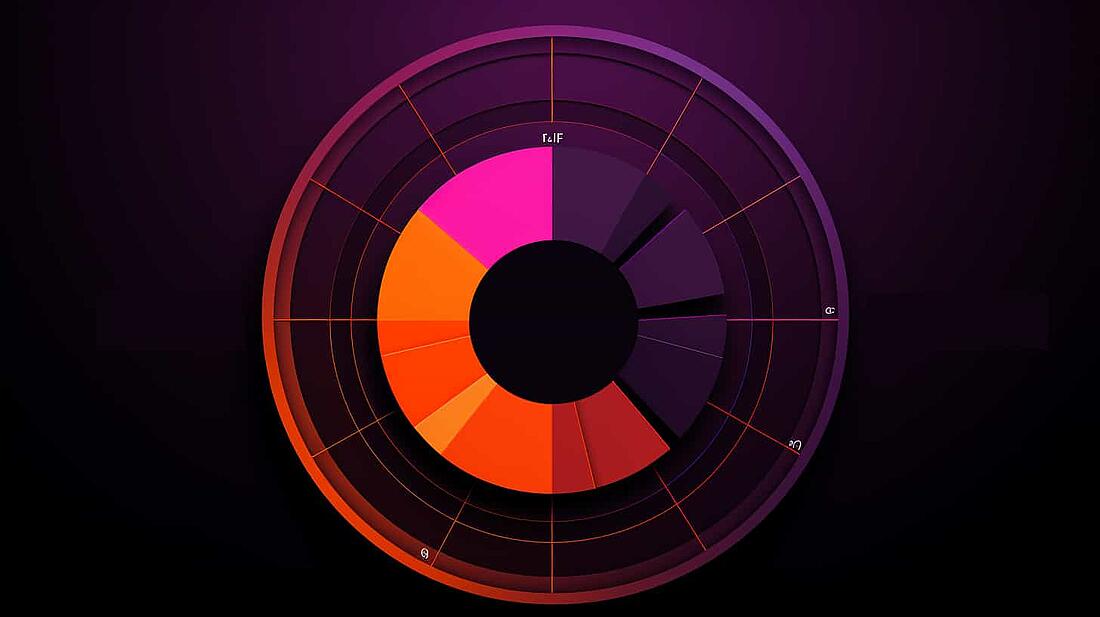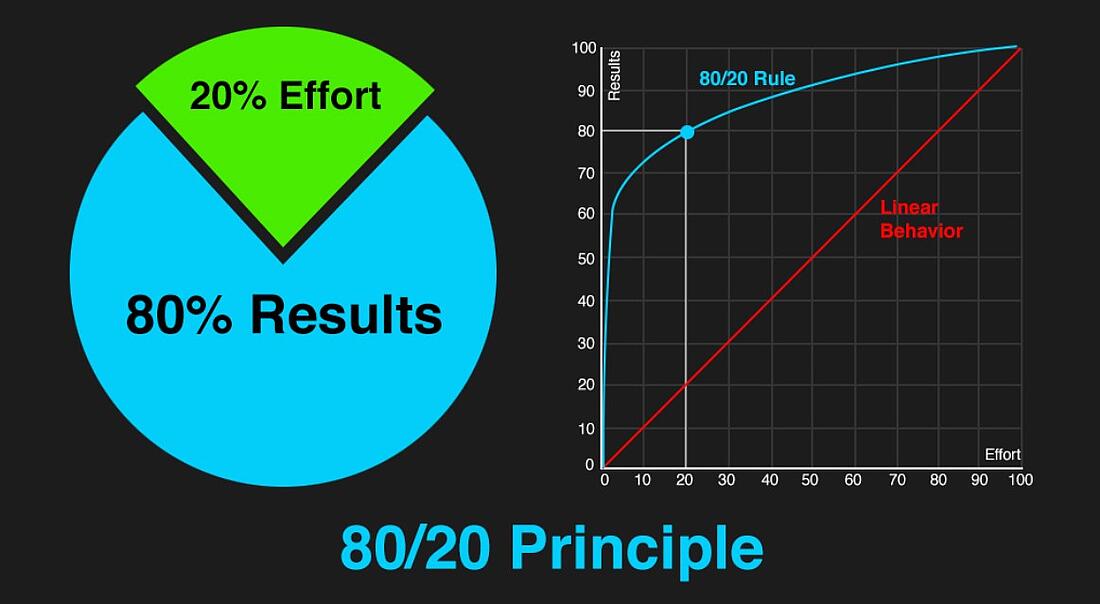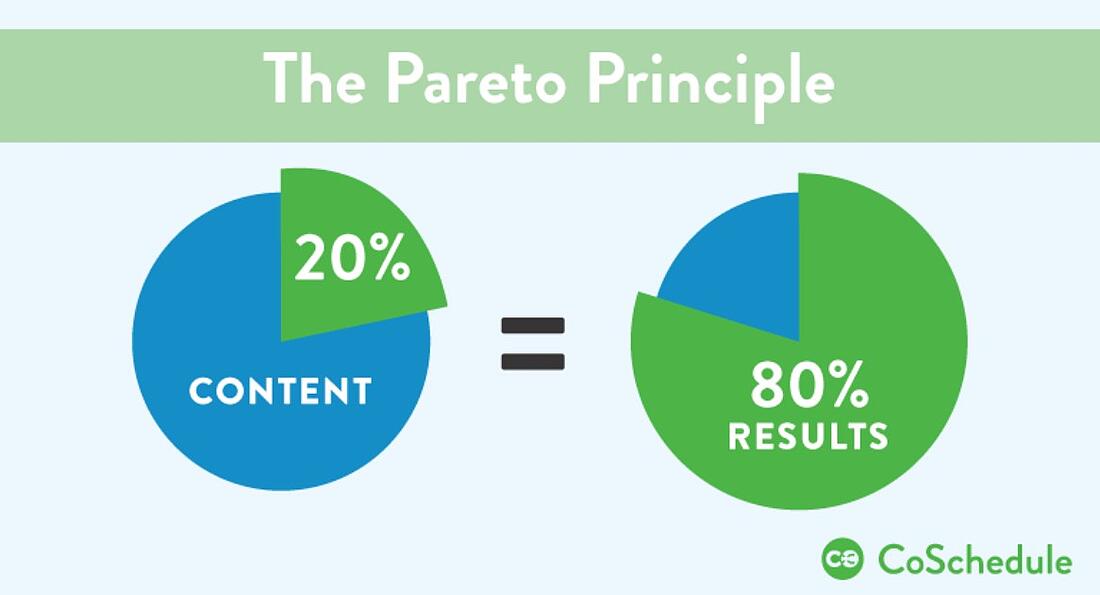- Why Us?
- Features
White Label
For SaaS Platforms & Agencies
Provide our complete analytics suite to your clients, directly within your own interface and with your/their own branding. Discover Analytics-as-a-Service and White Label Analytics. Great benefit, minimal effort.
- Pricing
- White Label
- Success Stories
- ResourcesGetting Started
CONTENTS
- What is the Pareto Principle?
- The 80/20 Rule in Marketing
- Benefits of the Pareto Principle to Marketing
- The Power in Applying the Pareto Principle to Your Website
- How the Pareto Principle Relates to Websites
- Using Analytics to Find Your 80/20 and Optimize
- 1. Get Rid of Unused Pages
- 2. Shed Unnecessary Elements from Pages
- 3. Help 80% of Users
- 4. Tackle the Biggest Barriers
- 5. Mobile-First Design
- That's the Pareto Principle Explained!
- About the Author
The Pareto Principle: Why it’s Important for Growing Your Website

Every marketer dreams of being able to become more effective and get better results while doing less work, something that can be achieved by following the Pareto Principle.
And by also using analytics, you can significantly increase your effectiveness and grow your website in the right way.
But back to the Pareto Principle. By focusing on the 20% of your efforts that bring you 80% of the results, you will be able to optimize your website, increase conversions, and also experience massive growth. And and all while also doing less work.
No doubt this is something that appeals to you.
So read on as we dive into why the Pareto Principle and analytics are crucial to growing your website.
The Pareto Principle states that 80% of results in any system come from just 20% of the causes.
It originated from Vilfredo Pareto, an Italian economist. In 1906, he noticed that 20% of the Italian population owned 80% of the land. He then became henceforth obsessed with the 80/20 ratio and started seeing it in everything.
While this may seem vague, applying the Pareto principle can provide significantly insightful analysis of various lopsided systems.
Crucially for us, this includes many strategies in marketing.
Here are some marketing-specific examples of the 80/20 way of thinking:
- 80% of the businesses revenue comes from 20% of its customers
- 80% of total sales are brought in by 20% of sales staff
- 80% of search visits are generated by 20% of the keywords
- 80% of social shares come from 20% of social updates
- 80% of content marketing leads come from 20% of content assets
- … and so on
These are just a few of the 80/20 principle variations you may have come across, But all of them to say one thing:
80% of your results in business come from just 20% of your efforts.
But, you should not get hung up on the numbers 80/20. These will vary slightly according to the different contexts. The point is, within any system, there are only a few key variables that affect the outcome.
Most other factors will have very little to no impact, which means that they represent a poor investment in money, time, or effort.
The bottom line is that the Pareto Principle has the power to transform your efforts in many different aspects of marketing and sales.
Let’s look at that in a bit more detail.
Or, it can be used for optimizing the 20% of your web page where visitors spend 80% of their time.
This is also a great way to improve conversions.
These are just two examples. However, they're enough to show how Pareto’s Law allows you to focus in on the crucial cause-and-effect principles. And by doing this, you can prioritize your resources and attention.
At a simple level, this principle should remind you about the time management of your marketing efforts.
To experience optimal results, you should focus your time on your main customer segments and the most popular products, as well as the biggest causes of dissatisfaction among your customers, and so on.
Beyond this, the Pareto Principle should prompt you to determine WHY you're experiencing those results. Ultimately, it will help you review why errors occur in the process. Or, you'll see how you can improve processes that drive sales and make them more efficient.
So, for example, you may notice that 20% of your products or clients return 80% of your sales and revenue. By focusing your money and time on that 20%, you will be able to increase your revenue significantly.
Benefits of the Pareto Principle to Marketing
There are many other benefits of using the psychology behind Pareto's Law in improving your marketing and growth strategies.
These include the following:
- By applying the 80/20 rule on your website, your visitors will enjoy a lean, easy to navigate website.
- There will be fewer distractions, which means fewer people will click away from the call to action or the main goal of the page.
- You also get to enjoy quicker page response times
- The features and functionality that are left on your website will be of higher quality since you can focus more on them and work to optimize them.
So as you can see, your website visitors benefit quite a lot from the 80/20 principle on your website.
But that's not all. Here's how you will benefit:
- You get higher conversion rates, which means more opt-ins, subscribers, members, and customers.
- You get a higher percentage of visitors going to your primary CTA
- You have a lot less work to do and more time to do it in as you are only focusing on the 20% which matters.
- Fewer elements to deal with means you have an easier time doing your website design and management.
Today, the Pareto Principle is undoubtedly one of the greatest secrets of the most effective businesses and individuals.
Let's then apply it to running a website.
Here, the Pareto Principle states that 20% of everything you do on your website will give you 80% of the results you desire.
What this basically means is that you need to focus more of your time, money, and also effort on that 20% and really perfect it.
This is obviously far more effective than spreading yourself thin on a lot of other aspects. Simply put, this undoubtedly won't bring you much in the way of positive results.
You need to be ruthless. Get rid of the other 80% of tasks, processes, systems, etc. as they are nonessential details. The ROI for this stuff is extremely low when compared to the 20% that brings in 80% of the results.
A good example is in content curation and promotion. The Pareto Principle can help you figure out what content works best so you can focus more on that for maximum impact.
Understanding that 20% of your causes are responsible for 80% of your effects could be the difference between a website that is mediocre or one that is phenomenally successful.
Research has revealed that the features that generate most conversions are actually a minority of the full functionality of the website or app. The Pareto Principle has a vital effect on UX and ultimately on the functionality of your website and the effectiveness of its content.
Armed with this information, how can you use the 80/20 rule to improve user experience and conversions?
In this section, we will take a look at the multiple ways the 80/20 rule applies to optimizing your website and making it more efficient and primed for conversions.
How the Pareto Principle Relates to Websites
Let's break this down:
Most Used Pages
Which pages on your website are the most popular with your users? Which ones do they use most often? Once you determine what users want the most, this will help you focus on optimizing the content on those pages and creating more of that type of content so you can get more results from less effort.
Most Used Parts of Pages
In addition to knowing your most used pages, it also pays to determine which parts of your webpages your audience uses most. You can use analytics and heatmaps to get this information. Alternatively, you can simply conduct a survey to get the information directly from your audience.
Ask them to rank some of the most used features and discuss their thoughts. This will help you discover the 20% of features that appeal to 80% of your website visitors.
Bugs that Affect Most Users
Yet another way you can make use of the Pareto principle to help you improve and grow your website is by eliminating the bugs that affect the highest number of users.
For instance, you may realize from doing your research that 80% of your business’s complaints come from less than 20% of your customers. With your understanding of the Pareto rule, you now know that you can eliminate 80% of those customer complaints by correcting just 20% of the causes.
Using Analytics to Find Your 80/20 and Optimize
There are obviously many different ways you can use traffic analytics to help you improve your website.
For instance, you can use traffic analytics to discover the most used pages or parts of your website (as outlined above) and optimize those.
Or, if you’ve taken the time to create an online course, optimizing correctly will undoubtedly lead to more sales and more revenue for the company.
Here are some of the most effective ways to use analytics to find your 80/20 and optimize:
1. Get Rid of Unused Pages
One of the simplest ways to improve user experience and also boost conversions is to delete unused pages on your site. The last thing potential customers want when they visit your site is to see old and outdated pages.
Removing unused pages can also help to boost your SEO.
This is especially the case with link building efforts, since consolidating pages will bring more targeted traffic to your website.
2. Shed Unnecessary Elements from Pages
Traffic analytics can help you find the features or content that users don’t use much.
These could be sidebar widgets, social sharing buttons, main menu links, and so on.
You can then de-clutter your web pages by removing these elements so you can focus on the stuff that your visitors find valuable and useful. When you’re doing something like this, it’s a good idea to use a landing page builder as they have many pre-designed templates to follow that remove many (or all) distractions.
Laterooms used this tactic to optimize their homepage after their traffic data analysis showed them that most users don't look at most of the content on that page. They then decided to remove the majority of the content and focus the home page on the main thing that users wanted when they came to the website, which is search.
After removing the clutter and emphasizing the search feature, it helped boost their credibility and conversions significantly.
3. Help 80% of Users
If your traffic analysis shows that 80% of visitors to websites choose the same option, you may consider defaulting to that option.
For instance, Amazon noticed that most people selected the United Kingdom during the checkout process when browsing on Amazon.co.uk, so they made it the default selection which gave people one less thing to think about and helped save time during checkout.
4. Tackle the Biggest Barriers
Traffic analysis will help you determine the biggest issues that are causing the majority of user problems so you can deal with the biggest barriers first and hence see the biggest results.
By focusing on the 20% of things with the potential to make the most difference in your conversions, you ensure that you use fewer resources to get maximum benefits in your strategy.
These are just a few of the endless ways you can use analytics to find your 80/20, prioritize your efforts, and optimize your website. But, there is one more important application of the 80/20 rule in marketing:
5. Mobile-First Design
Mobile marketing is an important subject in its own right given the large proportion of people who access the internet through their smartphones.
Creating landing pages with mobile-friendly designs can undoubtedly help boost your conversions. Mobile-first demonstrates the Pareto Principle and shows that you can make the biggest difference to your website conversions by focusing on the 20% of things with the potential to make the most impact.
The majority of the time in a website's design process, the mobile version is created as an afterthought after the desktop version has been developed. But given that more than half of users connect to the internet with mobile devices, it really shouldn't be.
However, by focusing on the mobile version first, the 20% of a website's features and functionality that are most essential for users are the ones developed first as there is limited space on smaller mobile screens.
The trick to using the Pareto Principle successfully is to never stop looking for things that could make the biggest difference to ongoing conversions.
By implementing this principle in the different aspects of your website, you will avoid investing too much time or money into optimizing little-used functionality. Instead, you will be able to focus your investments on the top 20% for optimal results.
That's the Pareto Principle Explained!
As a website owner, you are generally tasked with figuring out an infinite number of problems using limited resources. This means that you need to find out what matters the most and then invest the majority of your money, effort, and time into those key areas where you will make the greatest impact.
The Pareto Principle and analytics are crucial ways to help you conduct user research. It will enable you to determine the top 20% of things that are bringing 80% of the results. And with this knowledge, you can prioritize ways to spend your design and development resources to get the best return on your investment.
Share article
Get Started for Free
Gain World-Class Insights & Offer Innovative Privacy & Security

You might also like
Customer Success: Why it's So Important for Digital Marketing Success 11 October 2019 - by Editorial Staff
11 October 2019 - by Editorial Staff
Paid Advertising: Do Paid Ads Influence Organic SEO Results? 11 October 2019 - by Editorial Staff
11 October 2019 - by Editorial Staff













